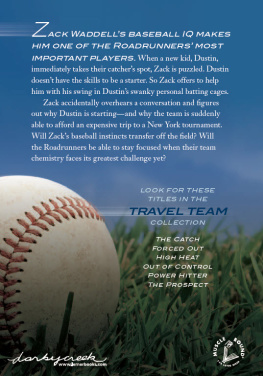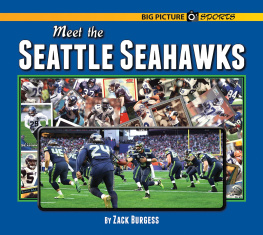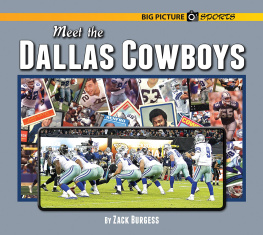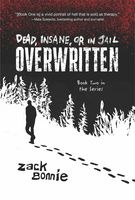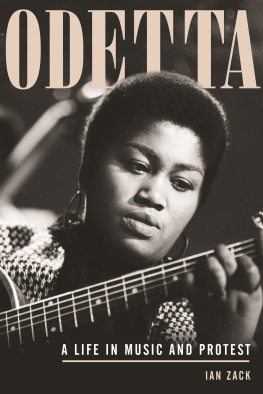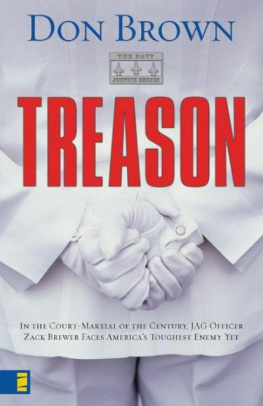Text copyright 2012 by Lerner Publishing Group, Inc.
All rights reserved. International copyright secured. No part of this book may be reproduced, stored in a retrieval system, or transmitted in any form or by any means electronic, mechanical, photocopying, recording, or otherwisewithout the prior written permission of Lerner Publishing Group, Inc., except for the inclusion of brief quotations in an acknowledged review.
Darby Creek
A division of Lerner Publishing Group, Inc.
241 First Avenue North
Minneapolis, MN 55401 U.S.A.
Website address: www.lernerbooks.com
The images in this book are used with the permission of: Kelpfish/Dreamstime.com, p. 117; iStockphoto.com/ Jill Fromer, p. 120 (banner background); iStockphoto .com/Naphtalina, pp. 120, 121, 122 (brickwall background). Front Cover: Getty Images/Taxi/Getty Images. Back Cover: Kelpfish/Dreamstime.com.
Main body text set in Janson Text 12/17.5.
Typeface provided by Adobe Systems.
Fehler, Gene, 1940
Forced out / Gene Fehler.
p. cm. (Travel team)
ISBN: 9780761383215 (lib. bdg. : alk. paper)
[1. BaseballFiction.] I. Title.
PZ7.F3318Fo 2012
2011027145
[Fic]dc23
Manufactured in the United States of America
1BP12/31/11
eISBN: 978-0-7613-8731-2 (pdf)
eISBN: 978-1-4677-7089-7 (ePub)
eISBN: 978-1-4677-3056-3 (mobi)
T O M IRIELLE, G ABRIELLE,
AND K AYLA
The way a team plays as a whole
determines its success. You may have the
greatest bunch of individual stars in the
world, but if they dont play together, the
club wont be worth a dime.
BABE RUTH
CHAPTER
S econd baseman Zack Waddell kept up his nonstop chatter. One more out and the Roadrunners would extend their winning streak to eleven games. The only problem: the San Antonio Aztecs had the tying run on third and the lead run on first.
Zacks Las Vegasbased travel team was ranked ninth nationally. They wanted to keep that ranking.
While closer Travis Melko stood just off the pitchers mound taking a couple deep of breaths, Zack glanced around at his outfield. He motioned for right fielder Sammy Perez to move a couple steps closer to the foul line. Even though the Aztecs little left fielder, Paco, batted right-handed, Zack knew he liked to punch the ball to right. The best way to play him was to pitch him hard and inside, but to play him almost like a left-handed pull hitter. If he did try to hit to left hed most likely get the ball in on his fists and pop it up or hit a weak grounder.
Even though this was Zacks first season with the Roadrunners, the reason head coach Scott Harris had recruited him from a local Las Vegas high school team to play for this elite seventeen-and-under travel team was because he was like a second coach on the field. Though Zack didnt actually play the real game of chess, people who watched him knew that the diamond was like his chessboard. He always knew how and when each piece should move.
Unfortunately, Melko didnt pitch Paco high and tight like he was supposed to.
Instead, he got the pitch on the outside half of the plate, and Paco drove it over first baseman Gus Toomeys head. The ball dropped just inside the foul line. Sammys desperate dive came up inches short, and the ball skipped past him to the wall. Sammy bounced up and chased it down. He made a perfect throw to Zack for the relay home. Zack then took the throw and spun. But the lead run was already crossing the plate. Gus, the cutoff man, shouted three! while pointing toward third. Zack rifled the ball toward third, and shortstop Carlos Trip Costas cut off his throw, holding Paco at second. Trip called time and walked the ball to Melko.
Travis slammed the ball into his mitt. Zack shook his head. You cant pitch Paco outside, he said to himself. But he dared not say it out loud. He knew well enough that even the best big-league pitchers couldnt hit their spot all the time. It wasnt fair to blame Melko.
What was done was done, but now the Roadrunners were in real trouble. Down one run was bad enough. Being two runs down to the Aztecs closer, Smithson, would make it tough. He was as hard a thrower as they had faced all season. Hed come in with two outs on in the eighth and shut down the Runners. It would be hard to score even one against him.
But Zack had a special trick up his sleevea play designed just for this situation.
Now was the perfect time to use it.
CHAPTER
I n a typical pickoff play Zack would signal the catcher. The catcher would then flash the signal. The pitcher and shortstop would count to three. And at three, the ball and the infielder should both be at second base, ideally a split second before the runner got back there.
Zack had added an extra touch, though. The pitchers and Zack and Trip had worked a lot on this particular variation. At the count of one, Trip would break for second. The runner would head back with him. At the count of two, Trip would break back to his shortstop position. The runner might relax for a split second and come back off the bag. At the count of three, Zack and the ball would both be there. Sometimes the movement of the shortstop would fake out the runner. The play didnt work all the time, of course, but it worked often enough, especially if the Roadrunners hadnt already used it on their opponent. Thats why they sometimes went several games without running the play. They only used it when the game was on the line.
Zack signaled catcher Nick Cosimo. Nick flashed the sign to Travis and Trip. At the count of three, Zack was at second base, taking the throw from Travis. A surprised Paco frantically threw himself headfirst back toward the bag. Zack slapped his glove on Pacos hand just before it got to the base. The ump got the call right. The Roadrunners sprinted toward the dugout, whooping it up all the way.
They didnt let up once they got to the dugout, either. The bad news: the top of the Roadrunners batting order had hit in the eighth inning. Theyd have the fifth, sixth, and seventh batters coming up. Still, there was really no weak spot in the lineup.
Assistant Coach Bobby Washington, or Wash, as he was better known, quieted the dugout.
Sit on his fastball, he said. Hes not going to let himself get beat by throwing his second-best pitch. If he gets two strikes on you, he might throw his curve as a wasted pitch. Be aware of it. But be looking first for the heater.
Trip led off. Wash was right. Trip got six straight fastballs. Two were high. Trip swung at the other four. He got just a piece of each, fouling them off. With the count 22, Trip watched the curve drop low and outside. The count went full. Trip sat on the next fastball, which was around his shoulders. He knew he couldnt catch up with it, so he stopped his swing. He knew it was ball four. The ump agreed, and Trip trotted down to first base.
Danny Manuel, the Roadrunners center fielder, saw nothing but fastballs. The third was right where he liked it, and he drove it to the gap in left center for a double. Coaching at third, Wash gave Trip the stop sign. A play at the plate would have been close. With nobody out, sending him home would have been too big a gamble.
Zack was up. A base hit would almost certainly score Trip from third and Danny from second, who represented the winning run. But Zack didnt even entertain the thought that he could be the hero by driving in the two most important runs.
A base hit would be a good bonus. But Zack knew his job was just to bring the tying run home and make sure Danny got to third base. A bunt was a possibility, but it was risky. Zack glanced at Wash from the third base coaching box. He wasnt surprised when he didnt see the bunt sign.
The Aztec infield played halfway, so that a hard-hit ball right at someone could keep the tying run from scoring. If they instead played in, any kind of ground ball could get through and two runs would score. And if they played deep, theyd be almost conceding the tying run.
Next page
